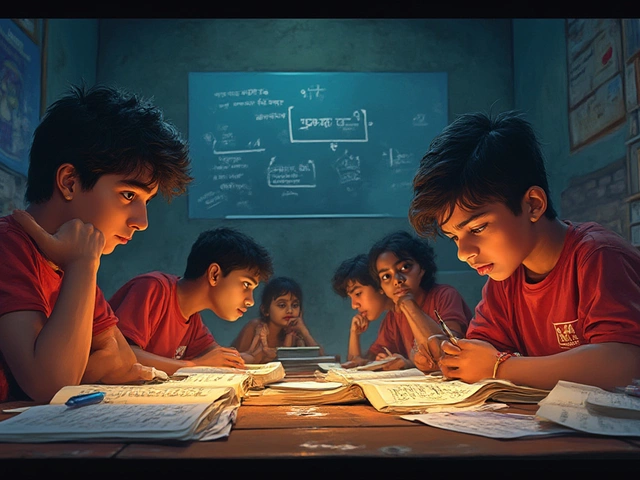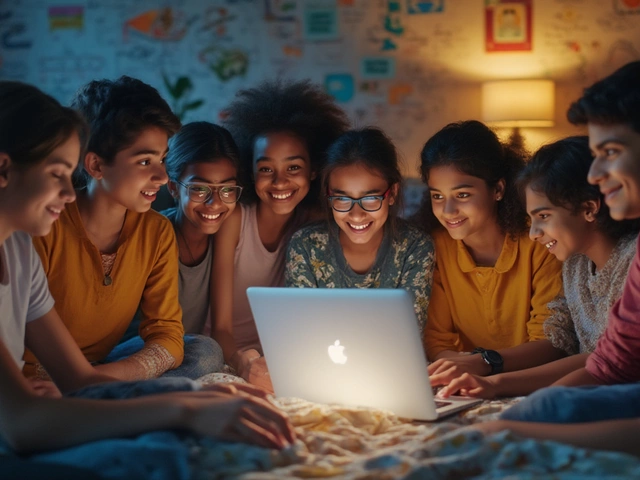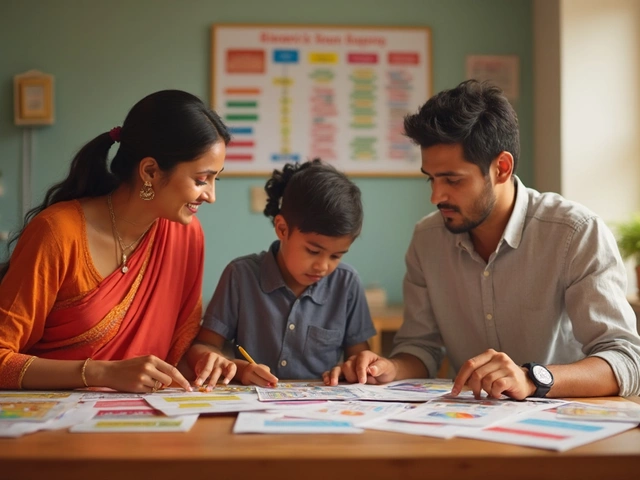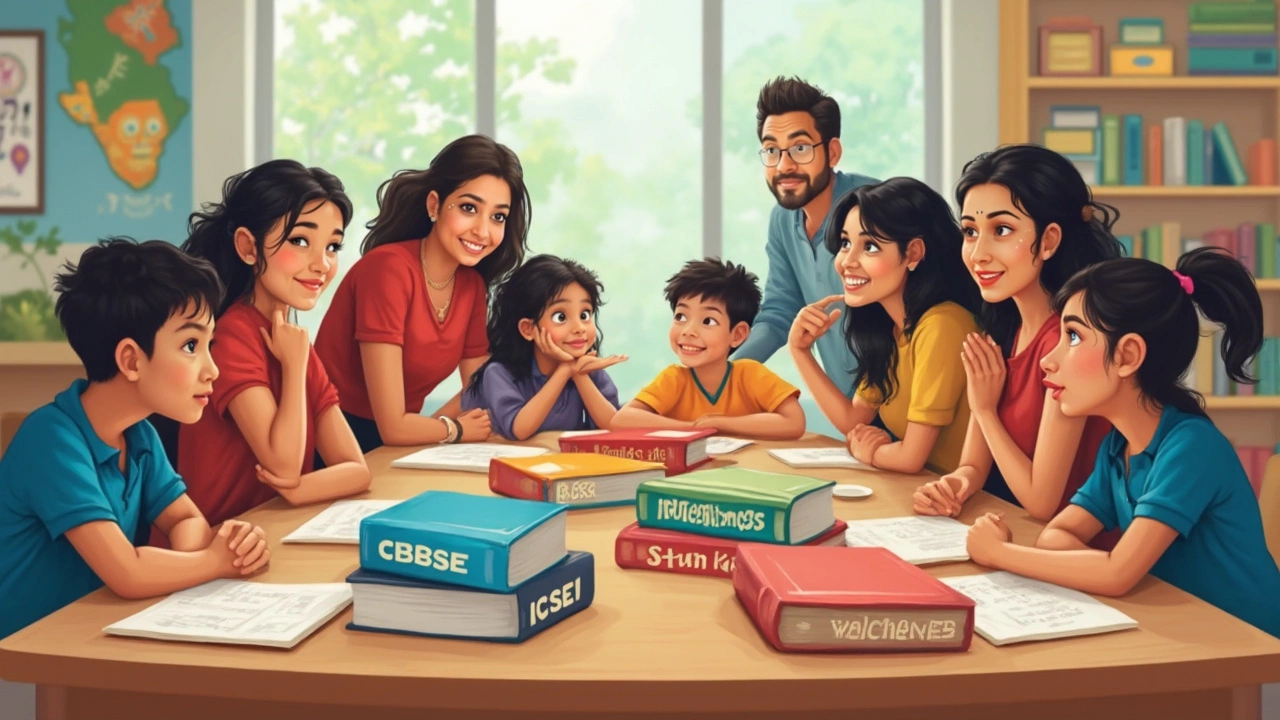
Choosing a syllabus for your kid can feel like picking the playbook for their whole school journey. If you’re looking at CBSE, you’re not alone—it’s the most popular board in India, and there’s a good reason why. Parents love it because it's recognized everywhere, not just in India but abroad too, so moving to a new city or country is much less of a headache for your child’s studies.
But what actually goes into the CBSE syllabus, and how does it stack up against the rest? A lot of parents just go with what the best schools nearby offer, but that’s not always the smartest move. Some boards focus more on theory, others on practicals, and some try to strike a balance. For many, the question really is: Does the CBSE style of teaching match how your kid learns best?
People rarely mention that CBSE isn’t just about the classic science-math grind—it’s also big on developing thinking skills, not just memorizing facts. The board often updates its textbooks and patterns (yep, the dreaded NCERT books), trying to keep things relevant and student-friendly. But let’s be real, no single syllabus fits every child. That’s why it's important to get the facts, not just go with the crowd or what the neighbor’s kids do.
- What Makes CBSE Stand Out?
- CBSE vs. Other Syllabi in India
- Pros and Cons of the CBSE Syllabus
- Which Kids Thrive in CBSE?
- Tips for Parents Choosing a Syllabus
What Makes CBSE Stand Out?
The Central Board of Secondary Education, or CBSE syllabus, isn’t just a big name—it’s got some solid features that set it apart from the crowd. First up, it’s run directly by the Indian government (unlike most state boards), so you’ll find the same standards and textbooks whether your child is in Delhi or Kochi. That’s a life-saver for families who move often because your child doesn’t have to start over or adjust to totally new topics every few years.
CBSE is famous for its focus on science and mathematics, but it’s not all about cramming numbers. Questions are usually set up to test if a student actually understands a concept rather than just memorizing lines. About 21,500 schools in India and 220+ schools in 28 other countries follow the CBSE curriculum as of 2023. Talk about reach!
You know those NCERT books? They’re used by CBSE and regularly get updated to match what’s going on in the world today. This keeps the topics fresh and doesn’t leave kids stuck reading outdated info from their parents’ school days.
“CBSE aims to provide a robust, vibrant, and holistic school education that will engender excellence in every sphere of human endeavour.” — Official CBSE Mission Statement
CBSE regularly tweaks its exam pattern. Instead of just long-answer questions, there are now more objective, real-life problems and short-answer types to help students think on their feet. Check out how it compares to other boards:
| Feature | CBSE | Other Indian Boards |
|---|---|---|
| Government Recognition | National | Mainly State |
| Medium of Language | Mostly English & Hindi | Regional + Others |
| Approach | Concept-focused, Application-based | Often Rote Learning |
| Transferability | Seamless Pan-India/Abroad | May Face Difficulties |
If you’re prepping for national-level entrance tests like IIT-JEE or NEET, CBSE lines up its content with those exams, making it a bit easier for students to revise and score well. It’s a reason why a big chunk of toppers in competitive exams come from CBSE schools.
All these points add up to make the board a solid pick, especially for parents looking for a syllabus that’s future-ready, flexible, and focused on the kind of learning that actually sticks.
CBSE vs. Other Syllabi in India
Different boards in India lead to very different school experiences. There are four major options—CBSE (Central Board of Secondary Education), ICSE (Indian Certificate of Secondary Education), State Boards, and IB (International Baccalaureate). Each comes with its own focus and style, and it’s way more than just picking a school uniform.
Let’s break this down. CBSE syllabus is known for being student-friendly and flexible. Schools that follow CBSE rely mainly on NCERT books, which are updated fairly often to match new trends and government policies. Exams test what kids really understand, not just what they can memorize. The board is also big on STEM (science, tech, engineering, math), which helps if your kid is aiming for competitive exams like JEE or NEET—most of these tests are based on the CBSE curriculum anyway.
ICSE, on the other hand, is more detail-heavy. The textbooks are thicker, the English is tougher, and there’s more focus on projects and lab work. If your child loves reading or is into language or the arts, ICSE sometimes feels a bit friendlier. It’s much less common though—by 2024, only about 2,400 schools in India offer ICSE, compared to 28,500+ for CBSE.
State Boards are different in every state, usually teaching in the local language and matching the state’s own curriculum and culture. These tend to be easier when it comes to marks but may not match up with national-level exams. IB is totally international, focused on assignments and big projects instead of traditional tests. It’s great for critical thinking, but less common and pretty expensive—only about 200 schools offer IB in India.
| Board | No. of Schools in India (2024) | Main Language | Exam Style | Focus |
|---|---|---|---|---|
| CBSE | 28,500+ | English/Hindi | Conceptual, application-based | STEM, Competitive exams |
| ICSE | 2,400+ | English | Detailed, project-oriented | Arts, Languages, Sciences |
| State Boards | Varies (thousands) | Regional/English | Theory-heavy, varies | Local context |
| IB | 200+ (globally popular) | English | Assignments, projects | Critical thinking, Global |
So, if your kid wants to switch cities often, CBSE gives them a smooth ride. If they’re thinking about JEE/NEET, CBSE is a safe bet. For those passionate about English or international careers, ICSE or IB could be worth the extra workload and fees. Every board has pros and cons—the trick is matching it with your child’s interests and your family’s future plans.
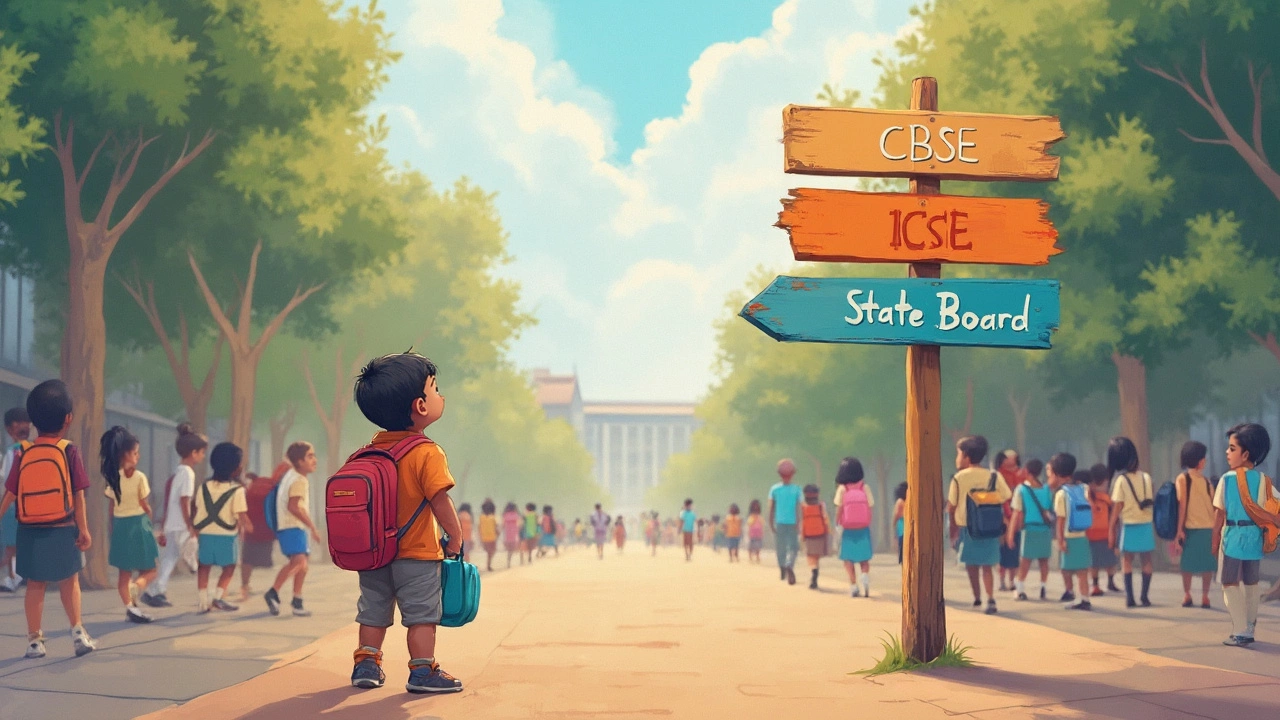
Pros and Cons of the CBSE Syllabus
The CBSE syllabus has its own set of perks and downsides. Most parents hear that it's the board most national entrance exams use—like JEE and NEET—and that's a big deal if your child is aiming for engineering or medicine. CBSE also sticks to NCERT books, which can make life easier. You don’t have to hunt for extra materials; everything you need is in one place.
- Pro: The focus on concepts, not just cramming. Exams and assignments often check if students really get the basics, instead of just repeating facts.
- Pro: It’s stress-friendly compared to some state boards. The grading pattern balances written exams and internal assessments, so one bad test won’t tank a student’s future.
- Pro: Textbooks and learning pattern are same across all CBSE schools in India, so switching schools is much easier during a transfer or move.
- Pro: The structure is designed for competitive exams—those NCERT books are actually the foundation for most entrance tests.
- Con: Sometimes, it doesn’t go deep in subjects like literature or languages. If your child is passionate about arts or regional culture, the CBSE syllabus may not offer the depth found in some other boards.
- Con: Some parents say it's a bit rigid. The focus on science and math means less creative electives compared to boards like ICSE or IGCSE.
- Con: Practical exposure can vary a lot—some schools do it well, others just stick to theory to finish the syllabus.
Here’s a quick look at how often CBSE students perform in national exams, compared to others:
| Exam | CBSE Participation (%) | State Boards (%) | ICSE (%) |
|---|---|---|---|
| JEE Main (2024) | 65% | 30% | 5% |
| NEET (2024) | 60% | 35% | 5% |
The dominance of CBSE in these entrance exams isn’t just because of popularity—its syllabus actually lines up with the structure of these tests.
One education consultant summed it up well:
“If college entrance in India is on your radar, CBSE gives a straight path. But if you want your child to think out of the box or develop quirky talents, look beyond just the safe option.”
Bottom line: CBSE is simple, straightforward, and geared toward national exams. But if your child’s strength is in languages, sports, or creative fields, it might be worth weighing these cons up front.
Which Kids Thrive in CBSE?
Honestly, not every kid clicks with the same syllabus, and the CBSE syllabus has a certain vibe. Kids who do well here usually have a knack for structured lessons and can handle steady assignments. Since CBSE exams put a lot of focus on understanding concepts rather than just rote memorization (especially in the last few years), those who like to know how things work, rather than cramming lists, will probably enjoy it more.
Does your kid dream of cracking national level entrance tests like IIT-JEE or NEET? CBSE is tailored for that. The board works closely with NCERT, whose books are literally the go-to material for these exams. This means if a child plans to take competitive exams after Class 12, CBSE puts them a step ahead.
CBSE also supports students who might need to switch schools because their family moves around. The board’s popularity means your child will find a familiar system and structure almost anywhere in India—and even some international schools abroad. For kids who play sports or are into arts and need a flexible, uniform routine, that’s a major plus.
But there’s more. Kids who are curious and ask a lot of questions tend to enjoy the changes CBSE has made—to encourage applications of knowledge over mugging up stuff. Project work, group activities, and practical assignments are getting more space in the classroom. Those who like hands-on learning will find these changes refreshing, even if exams still matter a lot.
So if your child is goal-oriented, adapts well to rules, and is aiming for the big national exams, CBSE often suits them. And if you want a system where the basics are solid, and the style fits a wide variety of learners, CBSE usually works out. It’s not perfect for every type of learner, but for students who want a blend of academic depth and clear goals, it fits pretty well.
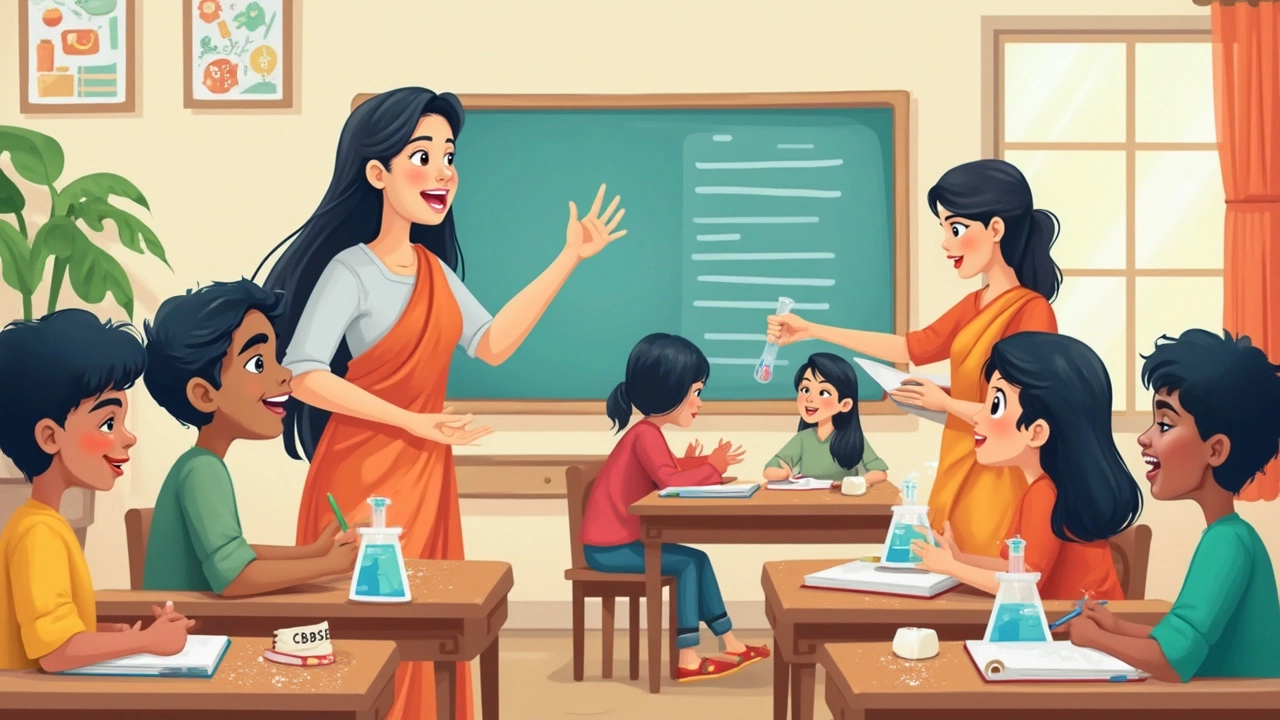
Tips for Parents Choosing a Syllabus
Picking the right syllabus for your child feels like a high-stakes decision, but it doesn’t have to be such a gamble if you break things down step by step. Here’s what works for most families when checking if the CBSE syllabus or something else is the right fit.
- Know Your Child’s Style: Is your child more into straightforward, structured learning or does creativity get them excited? CBSE leans towards clear concepts and regular testing, so kids who do well with routine tend to thrive.
- Think Long-Term: Is your job likely to transfer you within India or even abroad? CBSE is recognized in almost all cities and many international schools. That makes switching schools way less painful.
- Look at Subject Choices: While CBSE covers a wide range of subjects (lots of science and math), boards like ICSE might throw in more literature and project work. Talk to your child about what interests them.
- Check the School’s Track Record: Not all CBSE schools teach exactly the same way. Some have great results, others not so much. Ask for pass percentages and what kids from the school are doing after 12th.
- Costs and Workload: Fee structures, extra classes, books—it all adds up. CBSE textbooks (NCERT) are affordable compared to some other boards but ask the school if there are extra charges for things like technology labs or coaching.
It helps to see how different syllabi line up on a few basic things. Here’s a quick table so you’re not left guessing:
| Syllabus | Recognition | Focus | Textbook Cost | Best For |
|---|---|---|---|---|
| CBSE | National & International | Science, Maths, Concept Clarity | Low | Kids who relocate, or plan competitive exams |
| ICSE | National | Languages, Projects, Broader Choices | Medium-High | Kids who like balanced subjects & English |
| State Board | Mostly State | Regional Focus, State Specific | Low | Students settled in one state |
Finally, talk to real people. Meet teachers, chat with older students and parents, and check online reviews. Don’t fall for hype—ask for real stories, not just the brochure version. With some smart questioning and a close look at your child’s needs, you’ll know which syllabus will set them up for success.

